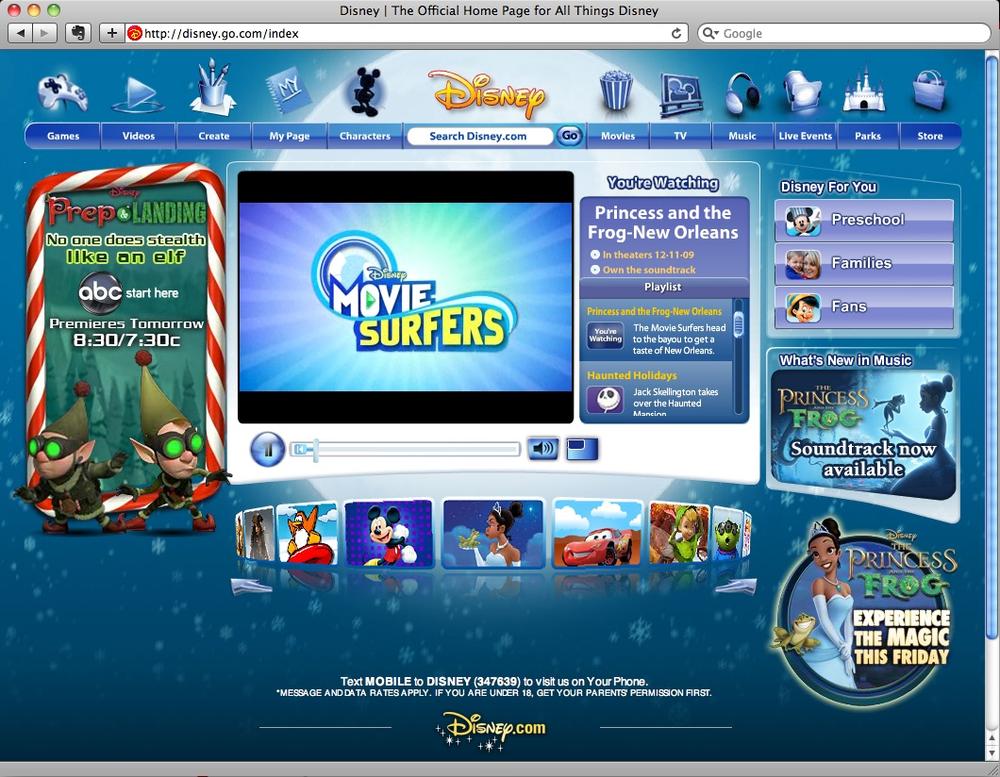Flash: An Introduction
One big reason for Flash’s widespread adoption by the web development community is its sophisticated technology. Flash produces high-quality animations—known as Flash movies—in a relatively small file size, a boon when you want to distribute complex multimedia over the Web. Flash performs this magic by storing images as vector graphics. Instead of recording every pixel in an image and then redrawing that image in every frame of a movie, Flash represents the image as a compact mathematical formula. And that’s the key to Flash’s advantage: redrawing the same image in each frame of a movie would require considerable storage space and processing power, but storing it as a mathematical expression results in a far slimmer file of little more than a set of calculations.

Figure 15-1. Some web pages, like the Disney (http://disney.com) home page, are created almost entirely with Flash. The interactivity, animation, and video playback abilities of Flash make it a great technology for entertainment websites. Ultimately, however, you still need an HTML file to display the Flash movie.
By contrast, with bitmap technologies, like GIF and JPEG images, every pixel of an image is a piece of information that must be stored, gobbling up precious bytes and adding to download time.
Note
Flash supports bitmap images, too, so a Flash movie can have GIF, PNG, and JEG files in it, in addition ...
Get Dreamweaver CS5: The Missing Manual now with the O’Reilly learning platform.
O’Reilly members experience books, live events, courses curated by job role, and more from O’Reilly and nearly 200 top publishers.

